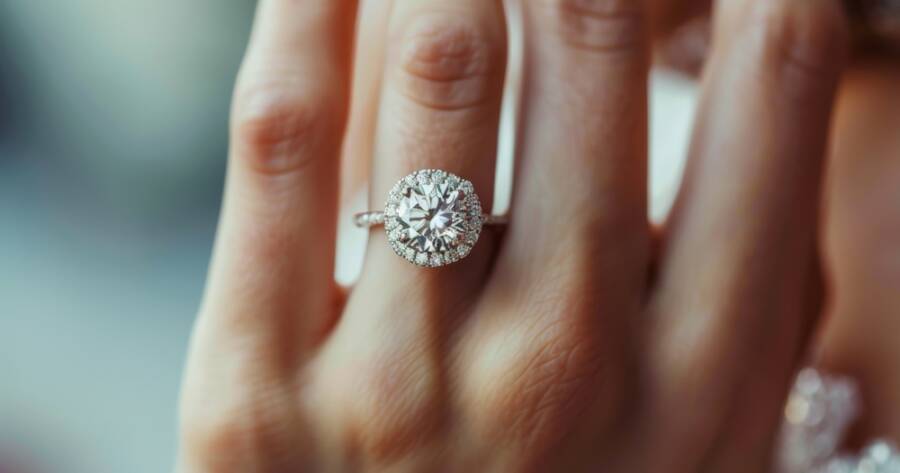An engagement ring is one of the most significant purchases of a person’s life, symbolizing love, commitment, and the start of a shared future. While traditional engagement rings are always an option, custom engagement rings have become increasingly popular. Custom rings offer the opportunity to create a truly unique piece that represents the individuality and preferences of the couple. However, designing and pricing a custom engagement ring can be a challenging process if you don’t know where to start. Discover pricing and design tips to guide you in creating a perfect custom engagement ring.
Why Choose a Custom Engagement Ring?
Custom engagement rings offer a range of benefits that standard, off-the-shelf rings may not. One of the biggest advantages is personalization. You can work closely with a jeweler to design a ring that matches your partner’s style, personality, and even your unique love story. From selecting the stone to choosing the metal and setting, you have control over every detail of the design.
Another reason to opt for a custom ring is the potential to use unique or heirloom stones. If your family has precious gemstones, incorporating them into a custom ring is a meaningful way to honor family traditions and create something that has sentimental value.
Factors That Influence Custom Engagement Ring Pricing
The price of a custom engagement ring can vary widely depending on several factors. Understanding these factors can help you determine a budget and make informed decisions during the design process. Here are the key elements that influence the price of a custom engagement ring:
- The Type and Size of the Center Stone: The center stone is typically the most expensive part of an engagement ring. Diamond rings are the most traditional, but other stones like sapphires, emeralds, or rubies are also popular choices. Diamonds are priced based on the 4 Cs: cut, clarity, color, and carat weight. The larger and higher quality the diamond or gemstone, the more expensive it will be.
- Metal Type: The metal used for the band plays a significant role in the price. Platinum is typically the most expensive, followed by white gold, yellow gold, and rose gold. Some metals, like titanium or tungsten, can be more affordable but still offer a modern and stylish look. The metal choice impacts both the aesthetic and durability of the ring.
- Complexity of the Design: A custom engagement ring allows for intricate detailing, but the more complex the design, the higher the cost. Custom designs that require more time to create, such as those involving multiple stones or elaborate settings, can increase the price.
- The Jeweler’s Fees: The jeweler’s reputation, craftsmanship, and expertise will also influence the cost. Experienced and renowned jewelers typically charge more for their work, but you may be paying for a higher level of artistry and attention to detail. If you choose a high-end designer, you may also be paying for their brand prestige.
- Additional Features: Additional elements like engraving, side stones, or unique accents (such as diamond halos or vintage-inspired details) can add to the overall cost. If you opt for custom-designed elements or rare materials, these can drive up the price as well.
Tips for Designing a Custom Engagement Ring
- Set a Budget: Before starting the design process, establish a clear budget. This will help guide your decisions regarding the type of stone, metal, and design complexity. Don’t forget to include the cost of any custom fees, additional stones, and any future maintenance, such as resizing or cleaning.
- Research Stone Options: If you’re considering a diamond ring, take the time to learn about the 4 Cs and how they impact pricing. If you’re open to alternative gemstones, explore options like sapphires, which can be more affordable than diamonds while still being beautiful and durable. Some people also opt for vintage or ethically sourced stones for added uniqueness and peace of mind.
- Think About the Band and Setting: The band and setting are key to the overall style and feel of the ring. Classic solitaire settings are timeless, but if you want a more unique design, consider options like halo settings, bezel settings, or vintage-inspired designs. The band can also be personalized with engravings, diamond accents, or intricate metalwork, giving it a unique touch.
- Work with a Reputable Jeweler: It’s essential to choose a jeweler who has experience in custom designs. Look for a jeweler who specializes in custom engagement rings and has a solid reputation. Ask to see examples of their previous work and check online reviews for customer feedback. A skilled jeweler will help bring your vision to life while guiding you through every step of the process.
- Incorporate Sentimental Elements: Personalizing a custom engagement ring doesn’t only mean choosing the design elements you like; it’s about adding meaning to the piece. If there are family heirlooms, birthstones, or symbols that hold special significance for you and your partner, consider incorporating them into the design for added sentimental value.
- Don’t Rush the Process: Designing a custom engagement ring is a special process, so take your time. It’s important to ensure that every detail, from the stone to the setting, aligns with your vision. Be prepared to work with your jeweler for several weeks or even months to get the perfect design.
Creating the Perfect Custom Engagement Ring Within Your Budget
Custom engagement rings offer couples the opportunity to create something truly unique, meaningful, and reflective of their relationship. While the pricing of custom rings can vary depending on factors such as the stone, metal, and complexity of the design, understanding these elements will help you stay within your budget and design a ring that feels personal and special. Whether you’re designing a classic diamond ring or a more unconventional gemstone piece, the process can be as exciting and rewarding as the proposal itself.

